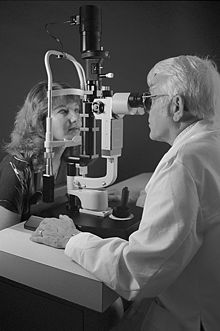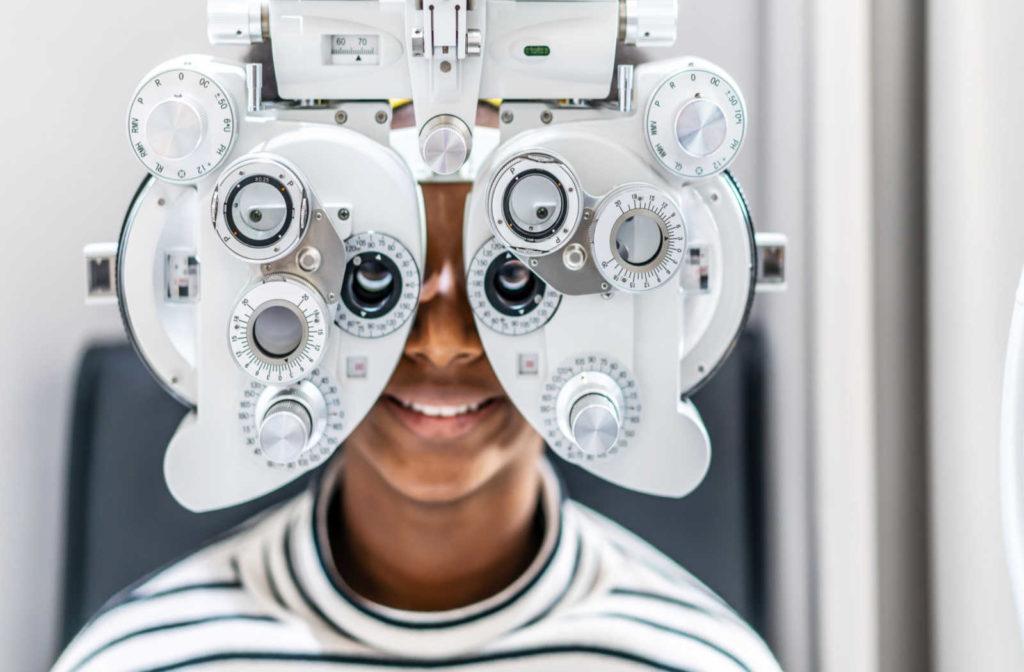Check Out Advanced Solutions at Opticore Optometry for Eye Wellness
Check Out Advanced Solutions at Opticore Optometry for Eye Wellness
Blog Article
Exploring the most recent Technical Advancements in Optometry and What They Mean for Eye Doctors
From the precision of Optical Coherence Tomography to the nuanced understandings offered by AI-driven analysis devices, these technologies are setting brand-new criteria in individual analysis and treatment. As these developments penetrate the method, optometrists are encountered with the challenge of welcoming these devices to enhance patient results.
Technologies in Diagnostic Equipment
Advancing the field of optometry, technologies in diagnostic tools have reinvented the means eye care specialists examine and identify aesthetic impairments and ocular conditions. The previous years has actually witnessed considerable technical improvements, making it possible for more detailed and exact evaluations. Optical Coherence Tomography (OCT), as an example, provides high-resolution cross-sectional pictures of the retina, permitting for the early discovery of diseases such as glaucoma and age-related macular deterioration. This non-invasive imaging strategy has come to be essential in modern optometric practice.
An additional secret technology is the introduction of innovative corneal topography systems, which map the surface area curvature of the cornea with precision. These tools are particularly useful for fitting get in touch with lenses and diagnosing corneal conditions. In addition, electronic retinal imaging has actually transformed conventional ophthalmoscopy, offering comprehensive, panoramic sights of the retina that assist in detailed visual assessments.
The advancement of wavefront aberrometry has also been vital, enabling the evaluation of refractive errors with unparalleled precision (Optometrist Chino). This technology aids in personalizing rehabilitative lenses and boosting medical results for refractive surgeries. Jointly, these analysis improvements empower eye doctors to deliver superior patient care, ensuring very early treatment and tailored therapy strategies, ultimately improving aesthetic health and wellness results
AI in Person Management
Structure on the foundation of cutting-edge analysis devices, the incorporation of man-made knowledge (AI) in person management represents a transformative jump for optometry. AI systems are significantly employed to improve effectiveness, precision, and customization in patient treatment. By assessing large quantities of information, AI can recognize patterns and predict potential eye conditions, allowing optometrists to tailor treatments more effectively. This capacity is crucial in managing chronic eye conditions such as glaucoma and diabetic retinopathy, where very early discovery and constant surveillance are key.
In addition, AI-driven platforms help with structured person interactions and administrative procedures. Automated organizing, online consultations, and personalized follow-up plans not just enhance person complete satisfaction yet additionally maximize time management for experts. These systems can triage clients based upon the urgency of their problems, ensuring that those in vital demand obtain punctual attention.
In addition, AI enhances decision-making by supplying optometrists with evidence-based recommendations and treatment pathways. By integrating data from digital wellness records, AI tools provide understandings that notify professional choices, reducing the danger of mistakes and boosting patient outcomes. As AI continues to progress, its duty in patient monitoring will likely expand, improving the landscape of optometric care.
Advances in Retinal Imaging
In the world of optometry, retinal imaging has experienced remarkable technological improvements that are boosting diagnostic capacities and patient treatment. Innovations such as Optical Coherence Tomography (OCT) and fundus photography have revolutionized exactly how optometrists evaluate the retina and envision.
Enhanced imaging modalities like OCT angiography are further refining analysis accuracy. This non-invasive method maps blood circulation in the retina, offering essential understandings into vascular health without the demand for dye injections. Furthermore, adaptive optics innovation is being integrated into retinal imaging systems to remedy eye aberrations, delivering extraordinary picture clarity. Such innovations assist in the recognition of minute retinal changes that might represent condition progression.
Moreover, improvements in artificial intelligence are enhancing retinal imaging by enabling automated analysis of large datasets. These systems assist eye doctors in recognizing patterns a sign of pathology, consequently improving analysis precision and effectiveness. Collectively, these innovations are changing retinal imaging into a foundation of modern-day eye care, enhancing outcomes and broadening restorative opportunities.
Teleoptometry's Growing Role
Teleoptometry is significantly ending up being a vital element of eye care, driven by developments in data and diagnostic tools. As optometry embraces electronic makeover, teleoptometry helps with remote examinations, enabling optometrists to prolong their services beyond standard limits. This is specifically useful in rural and underserved locations where access to specialized eye treatment is frequently restricted. By leveraging high-resolution video clip conferencing and progressed retinal imaging, optometrists can perform extensive eye exams from afar, ensuring timely diagnosis and treatment.
The integration of man-made knowledge (AI) further boosts teleoptometry, enabling the evaluation of visual information and helping in the discovery of ocular problems such as glaucoma and diabetic person retinopathy. AI-powered algorithms can rapidly translate complex imaging data, providing optometrists with important understandings that bolster scientific decision-making.
Furthermore, teleoptometry sustains continuity of care through smooth integration with digital health and wellness documents (EHRs), enabling eye doctors to maintain comprehensive person backgrounds. This guarantees that patients receive consistent and tailored care also when seeking advice from various experts.
Despite these benefits, difficulties remain, including ensuring data safety and managing individual expectations. However, teleoptometry stands for a substantial stride in the direction of more obtainable, effective, and patient-centered eye care. As technology advances, its duty is positioned to expand further.

Future Fads in Eye Care
A myriad of ingenious patterns is readied to improve the future of eye care, driven by technological innovations and the evolving requirements of patients. One substantial fad is the assimilation of synthetic knowledge (AI) in diagnostics, which promises to boost the precision and efficiency of eye exams. AI algorithms can examine large quantities of information from retinal photos, possibly discovering conditions like diabetic person retinopathy and glaucoma earlier than typical methods.
In addition, tailored medication is acquiring traction in optometry, with genetic screening informing personalized treatment plans. This approach intends to optimize individual end results by customizing treatments to specific hereditary accounts. Wearable technology, such as clever get in touch with lenses, is likewise coming up, offering real-time tracking of intraocular stress or sugar levels, therefore supplying continuous insights into eye and systemic wellness.
The fostering of increased truth (AR) and online reality next page (VIRTUAL REALITY) in training and person education is another emerging trend. These modern technologies offer immersive experiences that can enhance understanding and abilities both for optometrists and people. As these trends advance, optometrists have to remain abreast of technological innovations to offer sophisticated care, making certain improved individual results and contentment in the vibrant landscape of eye care.
Conclusion

Jointly, these diagnostic developments empower eye doctors to provide exceptional patient treatment, making sure early treatment and customized treatment approaches, eventually improving linked here aesthetic health and wellness results.

As these technologies proceed to advance, optometrists should adjust and incorporate them into method, inevitably optimizing workflow effectiveness and boosting the standard of eye care delivered to individuals.
Report this page